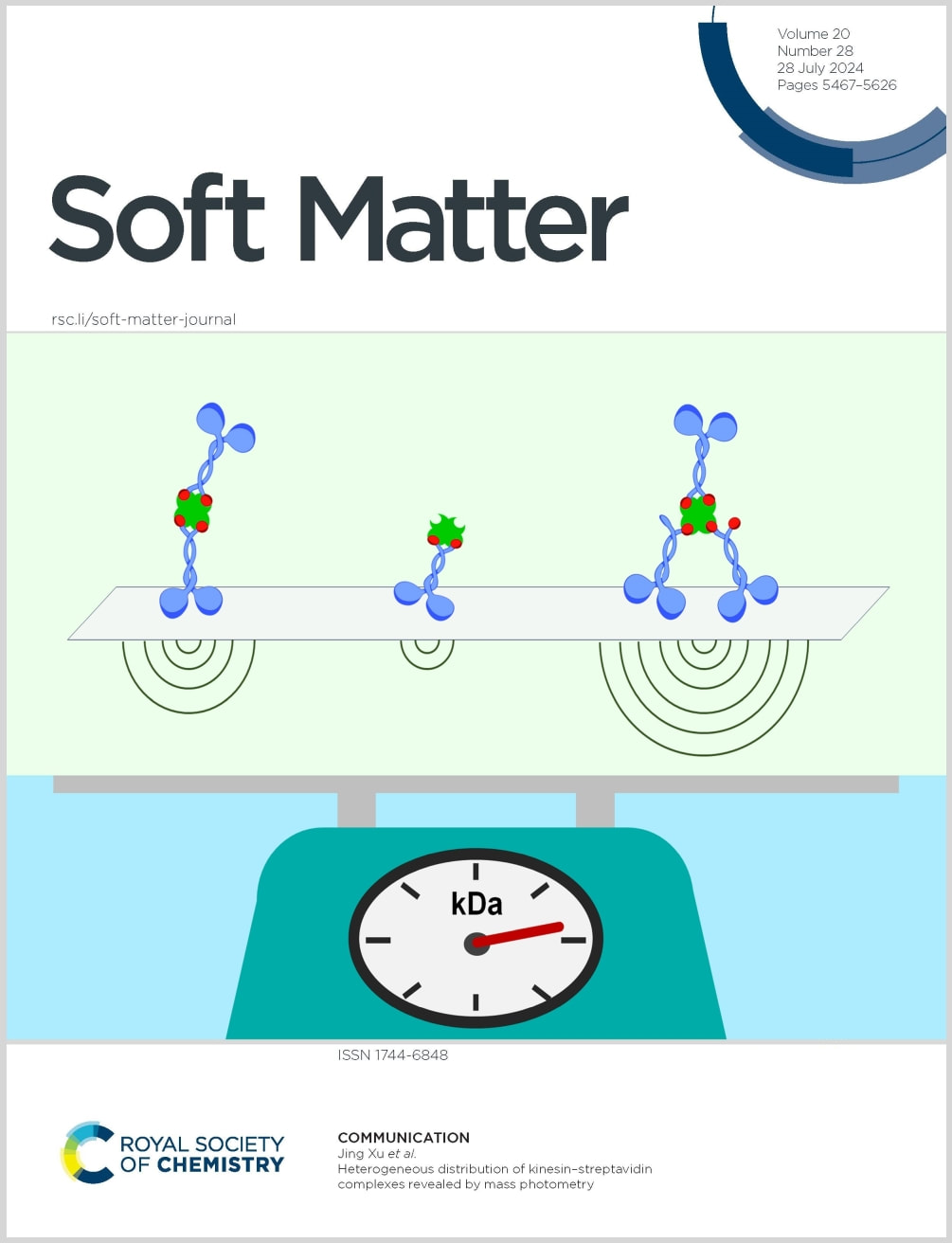Writing in Soft Matter, graduate student Nathaniel Brown, Professor Jing Xu, and collaborators solve a long-standing problem in microtubule-based active matter, which uses motor protein complexes to drive filament sliding. Quantitative measurements of the number of motors in each complex are necessary for extending theoretical models of active matter from the current mesoscopic descriptions toward microscopic understanding. A key challenge in such quantitative measurements, however, is that these complexes are exceedingly small and require measurements with a mass resolution on the order of 10-19 grams. To overcome this challenge, we employed a recently developed light scattering technique called mass photometry. This technique leverages the interference between a reflected plane wave and a scattered spherical wave to determine the polarizability of the scattering particle. For simple dielectric materials, such as protein complexes, polarizability scales with the volume and thus the mass of the scattering particle, thereby enabling us to count the number of motor proteins in each complex via light scattering. Using this mass photometry technique, we uncovered the first evidence that the complex population is heterogeneous, with complexes containing, one, two, three, and more motor proteins. We further developed a mathematical model describing the distribution of motor complexes that captures our data and clarifies the factors that determine complex heterogeneity.
This study combines experimental and computational expertise in the Jing Xu lab at UC Merced, and collaborator Keir Neuman lab at the National Institutes of Health.
This study was selected for the cover of Soft Matter.


